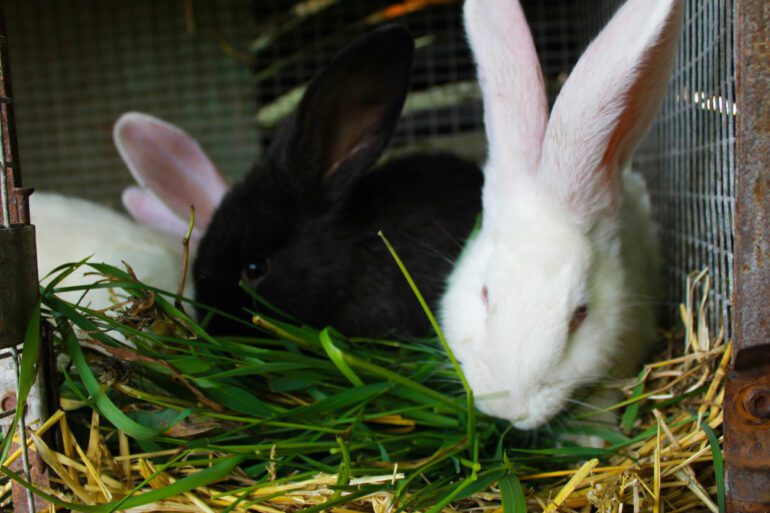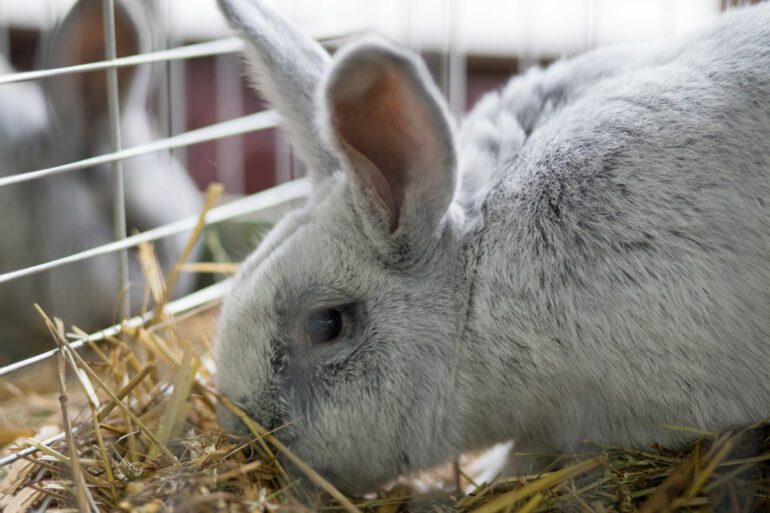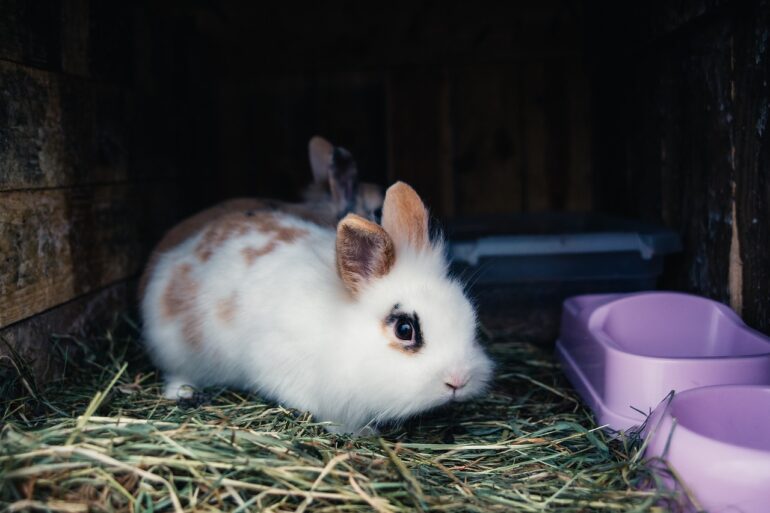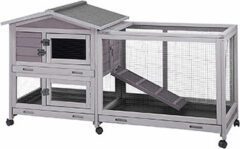There are many people out there who don’t know how to properly take care of their rabbit’s home or aren’t sure what to put in a rabbit’s cage. Getting the wrong cage for your rabbit can cause fatal health problems. It can also cause them to misbehave. Keep reading for expert tips and tricks to get your rabbit started on the right path.
How To Pick Out a Rabbit Cage
The first step in choosing a rabbit cage is to go big. Think about the size of a fully-grown rabbit while comparing options. We’ve learned from research and experience that at a minimum, you’ll want a large rabbit cage that’s four feet wide by two feet long by two feet high.
This is true no matter what you’re using the cage for. For example, want a smaller cage to put your rabbit in at night? There should still be enough room for it to hop three spaces in any direction. All your rabbit cages should also be tall enough for your furry friend to stand on its hind legs.
Will your rabbit be unsupervised often? You might consider getting a dog pen. This gives your rabbit enough space to hop around freely. You can hook two dog pens together for even more space.
Think of it this way. If you’re locked in the house alone, would you prefer being locked in the bathroom or having the entire house? When it comes to a rabbit cage, the bigger, the better.
Lastly, consider location. With an outdoor rabbit cage, it really needs to be the largest you can afford and fit in your yard. This ensures your rabbit gets all the exercise it needs to stay happy and healthy. The latches need to be predator-proof, and the cage needs good ventilation to prevent ammonia build-up.
For an indoor rabbit cage, size is still a major factor. You’ll need space for your bunny, its toys, litter box, food, and water. Wire-floored rabbit cages aren’t ideal because they can damage your rabbit’s paws.
How To Set Up a Rabbit Cage

For the most convenient rabbit cage setup, put your rabbit’s feed and water at one end and its bathroom area at the opposite end. Leave the middle area open for playing and sleeping.
And always remember that your rabbit needs plenty of space to hop about! Never put its food, water, or bathroom too close to the center. It’s absolutely crucial to have ample exercise space inside since your rabbit will spend so much time in its cage.
Lastly, before you start setting up a cage for rabbits, get familiar with it. Many cages have convenient doors, flaps, and latches to make maintenance much easier. Check your rabbit cage for these before deciding where to place anything.
What To Put in the Bottom of a Rabbit Cage?

One of the greatest challenges you may face with your bunny is choosing bedding to put in the bottom. Whatever you put in needs to contain the mess, but also keep your rabbit comfortable. Here are several pet-reviewed, vet-approved options:
- Dust-free recycled paper (not newspaper—the ink is highly toxic to your rabbit!)
- Cardboard
- Fleece bedding
- Pelleted straw
- Aspen shavings
- Hemp bedding
With this specific aspect of rabbit cage setup, use a bit of extra caution. You see, rabbits love to nibble. When their bedding is made from old sheets, towels, or newspapers, they’ll likely ingest dangerous materials.
When choosing rabbit cage accessories, the only limit is your imagination. You honestly don’t need expensive toys—you just need to rotate them regularly. This helps keep your rabbit’s imagination active, and it’ll be happier overall.
Try experimenting with different items to see what interests your rabbit. But again, remember that rabbits are nibblers. Avoid toys with small, swallowable parts or toys made from non-digestible materials.
What to Put in a Rabbit Cage: Your Complete Shopping List
Now that you understand the importance of proper rabbit cage setup, you’re ready to get started. Here’s a list of everything you’ll need before bringing home a bunny, including our favorite options.
- Litter box. Get one big enough for your rabbit to turn around while standing in it. “Rabbit litter boxes” are often too small—that’s why you’ll want one marketed towards cats. We love the Petmate Litter Pan because it fits nicely into most rabbit cages and it’s big enough for the average rabbit.2. Paper-based litter.Clumping and clay cat litter aren’t safe for rabbits. If ingested, they can face intestinal blockage. Paper litter, however, is safe and fast absorbing. Our favorite is So Phresh Paper Pellet Small Animal Litter because the pellet shape makes it even more absorbent.3. Vet-approved bedding.You’ll want non-toxic bedding in case your bunny takes a nibble. ComfyCritter Small Animal Bedding is dust-free, chemical-free, perfect for nesting, and highly absorbent.4. Hiding spot.Rabbits need a comfortable “safe space” to hide now and then. The Frisco Wooden Bridge Hideout is flexible, so you can make it into lots of fun shapes for your four-legged friend.
5. Tip-proof food and water bowls. Ceramic options are best since plastic can leach chemicals into food and water. These ceramic dishes by EveryYay are heavy, sturdy, easy to wash, and non-toxic.6. Healthy rabbit pellets.Your rabbit needs food pellets for all its vital nutrients. The best we’ve found is Garden Select Adult Rabbit Food because it’s both the healthiest and best-tasting option out there. Vets and rabbits love it!7. Hay trough.Hay is a necessary rabbit snack, but it gets dirty if you lay it on the cage bottom. A mounted hay rack like the SunGrow Rabbit Hay Feeder Rack keeps your rabbit fed without the mess.8. Timothy hay.Chock-full of fiber, timothy hay is a big part of a balanced rabbit diet. Field+Forest by Kaytee is our go-to because it’s grown without pesticides and shipped in freshness packs.9. Several different toys.Get a few with a mix of features. For example, this Tumble ‘n Toss toy has space to add treats for your rabbit to discover. And rabbits love natural toys they can throw around like this Woven Carrot by Kaytee.
The Bottom Line
All in all, it doesn’t take a lot to put together the perfect rabbit cage. While you do have to consider a few key details—like their sensitivity to ammonia and tendency to nibble— rabbit cage setup is both affordable and straightforward.
When you take the time to start this journey off on the right foot, you and your rabbit can look forward to years of happiness… and hoppy-ness.





